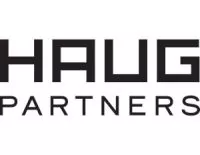In a significant decision, the Federal Circuit has clarified the weight given to third-party registrations in determining the strength of the opposer's mark and has firmly placed the burden of showing non-use of such marks on the opposer. In Spireon, Inc. v. Flex Ltd., 71 F.4th 1355 (Fed. Cir. 2023), the Federal Circuit vacated and remanded the Trademark Trial and Appeal Board's ("TTAB") decision sustaining Flex's opposition to the registration of Spireon's FL FLEX mark. Flex brought its opposition on the basis of priority and likelihood of confusion based on its prior registrations for FLEX, FLEX (stylized), and FLEX PULSE.1 The focus of Spireon's appeal was the TTAB's evaluation of third-party registration evidence and its effect on the strength of Flex's trademarks.
In evaluating the likelihood of confusion, the TTAB and courts consider several factors known as the DuPont factors.2 The sixth DuPont factor requires consideration of the "number and nature of similar marks in use on similar goods" which goes to the strength of the opposer's mark.3 There are two prongs to the strength of a mark, conceptual strength, which is a measure of a mark's inherent distinctiveness, and commercial strength, a measure of a mark's marketplace recognition. The Court held that the TTAB erred in consideration of both the conceptual and commercial strength of Flex's marks.
At the TTAB proceeding, Spireon argued that the term "flex" was weak and cited thirty third-party trademark registrations and applications as support.4 The TTAB excluded ten from consideration, found fifteen had "low probative value" due to consisting of compound terms including another word or letters in addition to "FLEX", and held the remaining five were not enough to find the opposer's marks were weak.5
The Court held that the TTAB erred by failing to consider the composite third-party registrations in its determination on whether Flex's marks are conceptually strong.6 The Court reasoned that the existence of third-party registrations containing a common element is evidence that the element may have "a normally understood and well-recognized descriptive or suggestive meaning."7 Thus, the TTAB should not have discounted the fifteen third-party registrations that consisted of composite marks with the common element "FLEX."
Additionally, the Court clarified that once an applicant introduces similar third-party registrations as evidence that the opposer's mark is commercially weak, the burden to prove non-use of those marks is on the opposer.8 Proof of use or non-use is material because the sixth DuPont factor only considers similar marks "in use" on goods. Thus, the Court noted that while the burden of producing evidence of relevant registrations is on the applicant, the opposer bears the burden of proving non-use of those marks.
What this practically means, is that unless the opposer provides evidence of non-use, use may be assumed and thus those registrations will weigh against the strength of the opposer's mark in the likelihood of confusion analysis. The Court reasoned that to hold otherwise would allow the opposer to dismiss the commercial significance of previously registered marks for identical goods when the opposer's own mark should perhaps not have been registered in the first place.9
The Court's decision emphasizes the consequences of failing to keep the register clear, particularly of marks that are no longer in use. In light of this holding, if an opposer cannot prove non-use of third-party registrations raised in defense of an opposition proceeding, the strength of its own mark may be implicated. Thus, trademark owners should take care to develop programs to monitor and clear the register of marks no longer in use that are identical or consist of common elements as their marks. Failure to do so may impact a trademark owner's ability to oppose a similar or identical mark based on a perceived lack of strength of its own mark.
Footnotes
1. Spireon, Inc. v. Flex Ltd., 71 F.4th 1355, 1360 (Fed. Cir. 2023).
2. In re E.I. DuPont DeNemours & Co., 476 F.2d 1357 (CCPA 1973).
3. Spireon, 71 F.4th at 1361.
4. Id. at 1360.
5. Id. at 1360-61.
6. Id. at 1363.
7. Id. (quoting Jack Wolfskin Ausrustung Fur Draussen GmbH & Co. KGAA v. New Millennium Sports, S.L.U., 797 F.3d 1363, 1374 (Fed. Cir. 2015) (quoting Juice Generation, Inc. v. GS Enters. LLC, 794 F.3d 1334, 1339 (Fed. Cir. 2015)).
8. Spireon, 71 F.4th at 1365.
9. Id.
The content of this article is intended to provide a general guide to the subject matter. Specialist advice should be sought about your specific circumstances.



